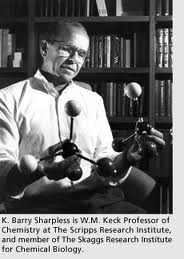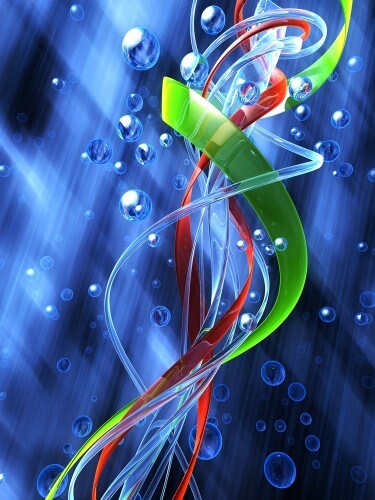The short list of candidates for the 2013 Nobel Prize in Chemistry does not include Israelis, but other surprises are expected

Note, unlike physics but as in medicine this year, the prediction missed. The winners are Prof. Martin Karpelos from Harvard University, Michael Levitt from Stanford and Prof. Aryeh Warshel from the University of Southern California, a graduate of the Technion and the Weizmann Institute
The candidates: Bruce N. Ames, Senior Investigator, Children's Hospital Oakland Research Institute, Oakland California, and Professor Emeritus in the Department of Biochemistry and Molecular Biology, UC Berkeley, California, USA.
Ames is nominated for the 2013 Nobel Prize in Chemistry for: "The invention of the Ames test for mutagenicity".
When it became clear that the outbreak of cancer can be triggered by a number of chemicals, a test was required to examine these substances before they were approved for use in humans. Testing substances in animals was slow and expensive and required exposing them to unrealistic amounts of the compound being tested. Positive findings from such tests have regularly led to receiving alerts from the agent himself, while receiving unsubstantiated information regarding the possibility that man-made chemicals are responsible for cancer in humans. This was especially important when it came to chemicals used as pesticides, or household chemicals, or those used as food additives. Then came the Ames test that changed everything.
The Ames test, as it turned out, was quick, cheap and simple to use, and did not require the involvement of an expert. The test is based on a bacterium, specifically the bacterium Salmonella typhimurium. Using this test it was possible to scan a huge number of chemicals, both natural and synthetic, while obtaining reliable results. The Ames test was published in 1975 (Proc. Natl. Acad. Sci. USA, 72: 5135-9) and led to a change in the reference and use of the too general term "cancer-causing substance", which was poorly used and is no longer common nowadays.
In the years that followed, Ames further improved his method. His most cited article (Mutation Research 113: 173-215), presenting improved methods for testing mutagenicity using the Salmonella bacterium, has been cited more than 5200 times so far.
The Ames test was expanded to test natural chemicals, and as a result it was discovered that many of them do have mutagenic activity, much to the surprise of many researchers.
Ames continued his research on mutagenicity and tried to link it to oxygen radicals as well, an attempt that resulted in an important article published in 1983 that was cited about 2400 times (Science, 221: 1256-64). His 1993 paper on the role of these radicals in the development of age-related degenerative diseases has been cited nearly 3500 times (Proc. Natl. Acad. Sci. USA, 90: 7915-22).

DNA nanotechnology
The candidates: Paul Elibisatos Professor of Nanoscience and Nanotechnology at Samsung Group, Professor of Chemistry and Materials Science and Materials Engineering, and Director of the Lawrence Berkeley National Laboratory, University of California, Berkeley, California, USA, Chad Mirkin Chad A. Mirkin, Professor of Chemistry, Northwestern University, Evanston, Illinois, USA and Nadrian C. Seeman, Professor of Chemistry, New York University, New York, USA. The three are nominated for the 2013 Nobel Prize in Chemistry for: "their joint contribution to the field of DNA nanotechnology".
For many decades colloidal particles have been used as colorants (pigments). The red color of colored glass, for example, originates from colloidal particles of gold. We know today that the behavior of such materials is due to their being nanometric clusters of gold atoms. In the past, the scientific use of these particles was quite limited. Although such substances were indeed used as dyes intended to increase the contrast in an electron microscope, they did not gain interest from chemists, mainly in light of the fact that they were not defined as molecules per se. Today, however, they are a vigorous field of research, and their combination with DNA was particularly beneficial. DNA is the most important and complex molecule in nature, and binding it to metal nanoparticles led to unprecedented results. This field is now known as DNA nanotechnology, and the three chemists nominated for the award are responsible for the growth and prosperity of this field.
Alivisatos is a world expert in the chemistry of nanoscale crystals; One of his articles (Science, 271: 933-937, 1996) has been cited 6400 times. He is also an expert in the application of these crystals, for example as biological markers (Science, 281: 2013-6, 1998, an article cited 4400 times). The use he made of DNA in this field proved to the world of science how versatile the DNA molecule really can be. He used the molecule to direct the growth of crystals and develop new materials (Nature, 382: 609-11, 1996) and even to measure nanometric distances (Nature Nanotechnology, 1: 47-52, 2006).
Chad Mirkin has published 11 research papers, each of which has been cited more than a thousand times. His most cited article (almost 3000 times) refers to a method for using DNA to group together nanoparticles to build larger and more useful materials (Nature, 382: 607-9, 1996). The method includes DNA oligonucleotides to which a sulfur group (SH) is attached that is attracted and binds to gold atoms. In a long-published article, the researcher demonstrated that it is possible to separate the gold atoms and create spherical nucleic acids with fascinating properties (J. Am. Chem. Soc., 134: 1376-91, 2012). Another important article, published in the prestigious journal Science (289: 1757-60, 2000, cited 1500 times), discusses the analysis of combinatorial DNA arrays using probes composed of nanoparticles.
Nadrian Seeman combined the field of DNA with the field of nanotechnology in the most useful and applied way. One of his articles, in the prestigious journal Nature (394: 539-44, 1998, cited nearly 1200 times) describes the design and self-assembly of two-dimensional DNA crystals, a process that enables the development of defined repeating units in the barrel nanometer size and can be analyzed by an atomic force microscope. His previous article, titled: "Synthesis from DNA of a molecule with the connectivity of a cube", was also published in the scientific journal Nature (350: 631-3, 1991) and hinted at the following - although the researcher himself claimed that he thought about the possibility to create three-dimensional DNA lattices ten years earlier and even hinted at it in an article submitted to the scientific journal Journal of Theoretical Biology (99: 237-47) in 1982.
Modular click chemistry
The candidates, MG Finn, Professor of Chemistry and Biochemistry, Georgia Institute of Technology, Atlanta, GA, USA Valery V. Fokin, Associate Professor of Chemistry, The Scripps Research Institute, La Hoya, CA, USA B and K. Barry Sharpless, Professor of Chemistry, The Scripps Research Institute, La Hoya, California, USA. The three are nominated for the 2013 Nobel Prize in Chemistry for: "The development of modular click chemistry".
Nature produces millions of organic materials and it does so efficiently in terms of raw materials and energy consumption, while obtaining high utilizations and without by-products that require disposal as garbage, in environments of both water and organic solvents, and while obtaining the exact desired structure. This means that if it is possible to obtain a molecule with one or another chirality, only the one with the required structure will be produced. The synthetic field known as "click chemistry" aims at this kind of synthesis. The collaborative efforts of the three researchers paved new paths for chemical synthesis using the click method.
The most successful example of click chemistry is the Huisgen cycloaddition reaction (reaction detail on Wikipedia) in which a pentagonal ring with three adjacent nitrogen atoms is formed. This reaction, and several other click-like reactions, appear in the first paper published by Sharpless and Finn in 2001 in which they first presented the idea (Angewandte Chemie International Edition, 40: 2004-21) and which has since been cited more than 4200 times. In this article, the researchers stated that nature prefers to produce small molecular units in which a carbon atom is connected to other atoms, and in the next step chain these units together to form proteins and carbohydrates. This synthesis method was defined by them as click chemistry.
Click chemistry finds applications in two main fields: life sciences and material sciences. An example of its uses in the life sciences is in the addition of a labeling group to a biomolecule, a configuration with great potential for diagnostic applications. In the field of materials science, click chemistry allows the creation of materials such as polymers and special coatings for surfaces with unusual properties.
The three researchers succeeded in imitating nature by using water as a solvent instead of the organic solvents that chemists usually use. Their 2005 paper (Angewandte Chemie International Edition, 44: 3275-9) has been cited more than 600 times. In this article, the researchers demonstrate how it is possible to synthesize organic compounds in an aqueous solution even though the starting materials are not soluble in water, and how these reactions proceed quickly, at ambient temperature, and while obtaining high yields, a method they called "reaction on the surface of water".
The researcher Finn also adapted the click approach using the enzyme acetylcholinesterase to build different molecules (Angewandte Chemie International Edition, 41: 1053-7, cited 428 times), as well as to create different types of polymers.
Pokin focused on the reactions catalyzed by metals. His 2002 paper with Sharples (Angewandte Chemie International Edition, 41: 2596-9) on the multistep Huisgen reaction utilizing the copper(I) catalyst has been cited more than 4000 times. The article detailing the use of the click method for the synthesis of complex structures known simply as dendrimers (Angewandte Chemie International Edition, 43: 3928-32) was cited about 700 times.
If these three researchers do win the Nobel Prize for Chemistry, it will be the second Nobel Prize for Chemistry won by the researcher Sharples. He won the Nobel Prize in Chemistry in 2001 for his "research on chiral catalyzed oxidation reactions". This award was also given jointly to the two researchers William S. Knowles and Ryoji Noyori for their "research on chiral catalyzed hydrogenation reactions".

2 תגובות
Why is Ovadia Yosef not a candidate??